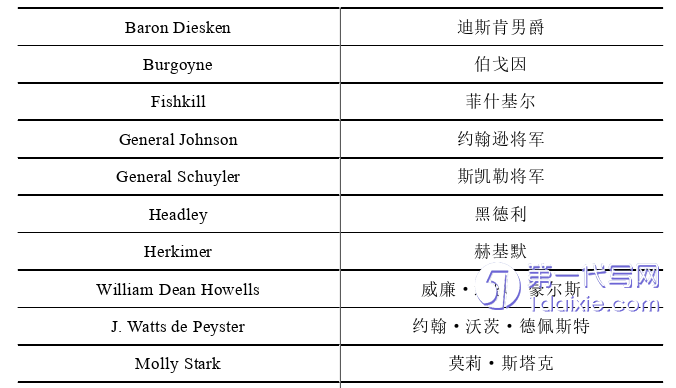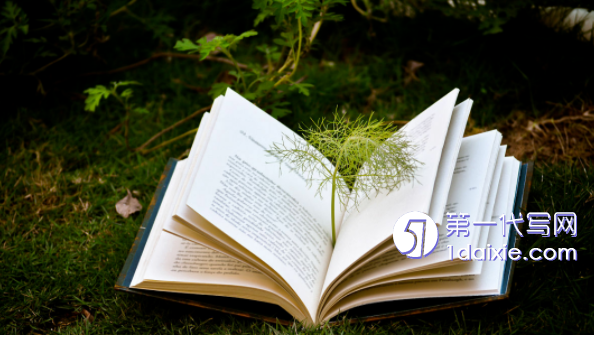本文是一篇英语论文,本次翻译实践以“变译理论”为指导,基于该理论的七种变通手段展开。变译理论是相对于全译而提出的,译者根据特定条件下目标读者的需求,采用增、减、编、述、改等变通手段获取原作信息。
Chapter One Introduction
1.1 Background of the Task
The translation of selected passages from See America First has been initiated at the behest of the translator’s supervisor. The translator elected to focus on “Lake Champlain” (Chapter 12), “The Adirondacks” (Chapter 13), and “Long Lake, Lake George, and Saratoga” (Chapter 14) for the translation exercise. Encompassing roughly 10,500 words from the original text, it has been rendered into approximately 16,300 Chinese characters. Throughout the translation endeavor, the translator, embodying the role of the principal translation agent, maintains an influential and determinative presence.
See America First, co-authored by American travelers Orville O Hiestand and Chas J Herr, was acclaimed for its rich knowledge and complicated language. The book, a travelogue spotlighting the allure of eastern America, advocates Americans to be closer to nature and pay attention to the scenery within the country bounds. These selected chapters, mainly describing the myth, the beautiful scenery and the residents’ lifestyles, perfectly capture the author’s reflective journey, arranged in chronological and spatial order. The text does not directly call on readers to visit, but conveys the splendor of the scenery, cultural charm through idiomatic expressions and historical references, and the rich historical significance behind the landscapes.

1.2 Linguistic Features of the Source Text
See America First is a text rich in linguistic features, exemplified by lexical choice, syntactic structure, and textual complexity, each of which contributes to a vivid portrayal of the essence of America.
The lexicon within See America First is distinctive for its panoramic vocabulary. There is a wealth of geographical and cultural terminology, reflecting the diverse landscapes and heritage of the American nation. Descriptive adjectives are used liberally, painting each scene with precision and evoking intense imagery. The book also employs a myriad of idiomatic expressions and historical references, which anchor the content in a particular cultural and temporal context. Specialized terms relating to flora and fauna, as well as regional colloquialisms, imbue the text with geographical characteristics and authority .
Syntactically, See America First exhibits a complex sentence structure that complements the descriptive nature of the text. The narrative employs a mix of both long and compound-complex sentences, with multiple clauses that add depth and detail, and short, impactful sentences that deliver pointed emphasis to key sights or concepts. The use of the passive voice is occasionally found, directing focus onto the subject matter rather than the observer, and modal verbs suggest possibility and wonder, contributing to an inviting tone that encourages exploration and imagination.
Chapter Two Translation Process
2.1 Translation Preparation
The preparatory phase before translation stands as a vital component in accelerating translation speed and enhancing its quality. Hence, the translator meticulously formulated a detailed plan covering three key aspects: collecting parallel texts, choosing translation tools and devising translation schedule.
Firstly, the collection of parallel texts. Parallel text entails any pertinent information closely related to the source text (Cai 3-4). For translators, parallel text can help them find the right way to present the source text and ensure translation precision to the greatest extent. To enrich the experience and understanding for readers embarking on the English-Chinese translation journey of See America First, the translator gained several similar Chinese versions of English tourist books. For example, Travels with Charley: In Search of the America by John Steinbeck (约翰·斯坦贝克《与查理同行:寻找美国》)— Steinbeck’s classic provides an intimate look at the American landscape and its inhabitants, echoing the themes of discovery and national identity prevalent in See America First. Wild: From Lost to Found on the Pacific Crest Trail by Cheryl Strayed (切丽尔·斯特雷德《荒野生存:太平洋山脊步道徒步记》) —This memoir offers a powerful and personal narrative of traversing wild America, resonating with the adventurous spirit of exploration. Notes from a Small Island by Bill Bryson (比尔·布莱森《小岛笔记》)— Although focused on Britain, Bryson’s keen observations and humorous style provide a template for engaging travel writing that can be appreciated in parallel to American journeys. Reading these books in tandem with See America First provided the translator a multidimensional view of travel writing, enhance cross-cultural appreciation, and offer various perspectives on storytelling that capture the heart of a nation’s landscape and people.
2.2 Translating
There is no doubt that the translation process holds critical significance in the translation practice and hinges on the translator’s deep comprehension and rendition of the source text. Grasping the meaning of the source text is the key to complete the translation task successfully. Therefore, the process of translation implementation was divided into two parts: understanding the source text and producing the translation.
Initially, the translator set the following goals for the initial translation:
1) The sentences conform to Chinese expression habits; 2) Strive to guarantee the objectivity and rigor of the translation; 3) Put the reader first.
Secondly, the translator comprehended the source text. If translators translate the source text without fully understanding it, they fail to express the exact meaning of the source text. Therefore, the translator perused See America First to grasp its main content and overall tone. Then she read the whole text carefully, captured the author’s intention and understood the significance of the article. Meanwhile, she marked some professional terms and sentences that are difficult to understand, and searched for obscure words through parallel texts, online dictionaries, and other Internet resources.
Chapter Three Theoretical Framework ............................ 9
3.1 Development of Variational Translation Theory ............................... 9
3.2 Variational Techniques .......................... 10
3.3 Studies on Variational Translation Theory ....................................... 11
Chapter Four Case Analysis .......................................... 14
4.1 Adding .................................. 14
4.2 Deleting ........................................ 18
4.3 Editing ................................... 21
Chapter Five Conclusion ................. 35
Chapter Four Case Analysis
4.1 Adding
The technique of addition involves augmenting the source material with supplementary information. It can be divided into three kinds: explanations, evaluations and expansions. Explanation refers to illustrating some parts of the original works, including providing explanations for allusions, ancient meanings (in modern ways), words and content, difficult points, and so on. Evaluation on the content of a translation, while expansions involve the insertion of pertinent material that enriches the translation (“Seven Variational Techniques” 94). These methodologies are particularly useful when the target readers might not possess the cultural context or specialized knowledge to fully grasp the source text.
Example 1:
Source Text: Here we visited the old tower where Marshal Bazaine① got over the stone wall② , the cell in which the prisoner of the Iron Mask③ resided, and the old Spanish well dating from the eleventh century. (Appendix 42) Initial Version: 在那里,我们参观了巴赞元帅翻越石墙的古塔,关押铁面人的牢房,以及可以追溯到十一世纪的西班牙水井。 Revised Version: 在那里,我们参观了巴赞元帅①越狱②的古塔,关押神秘铁面人③的牢房,以及可以追溯到十一世纪的西班牙水井。(Appendix 43) ①译者注:巴赞元帅:法国元帅弗朗索瓦·阿希尔·巴赞是一位法国军事家和政治家,出生于1811年,逝世于1888年。他曾参加过克里米亚战争、第二次意大利独立战争和普法战争等重要战役,并在普法战争中担任法国莱茵军团司令。

Chapter Five Conclusion
In grappling with the challenges of translation through practical experience, the translator has come to appreciate the demanding nature of a translator’s craft. This translation practice has not only honed the translator’s skill, but also fostered a sense of perseverance, from which the translator has derived significant benefit. In this concluding part, the translator will discuss the insights gained and the limitations encountered during this process.
First and foremost, the translator has realized the crucial role of target readers. The translator must balance the original author’s intention, with the needs and preferences of the target readers, which is pivotal for enhancing communication efficiency.
Additionally, the translator has realized the value of thorough preparation. Before embarking on any translation, it is imperative to fully digest the source material and understand the author’s overarching goals. This deep comprehension is directly linked to our ability to relay the primary message both accurately and objectively.
Another key insight is the importance of engaging with translation theory. Only with a solid theoretical foundation can we adeptly select and apply the right theoretical lens when confronted with various textual nuance.
reference(omitted)
